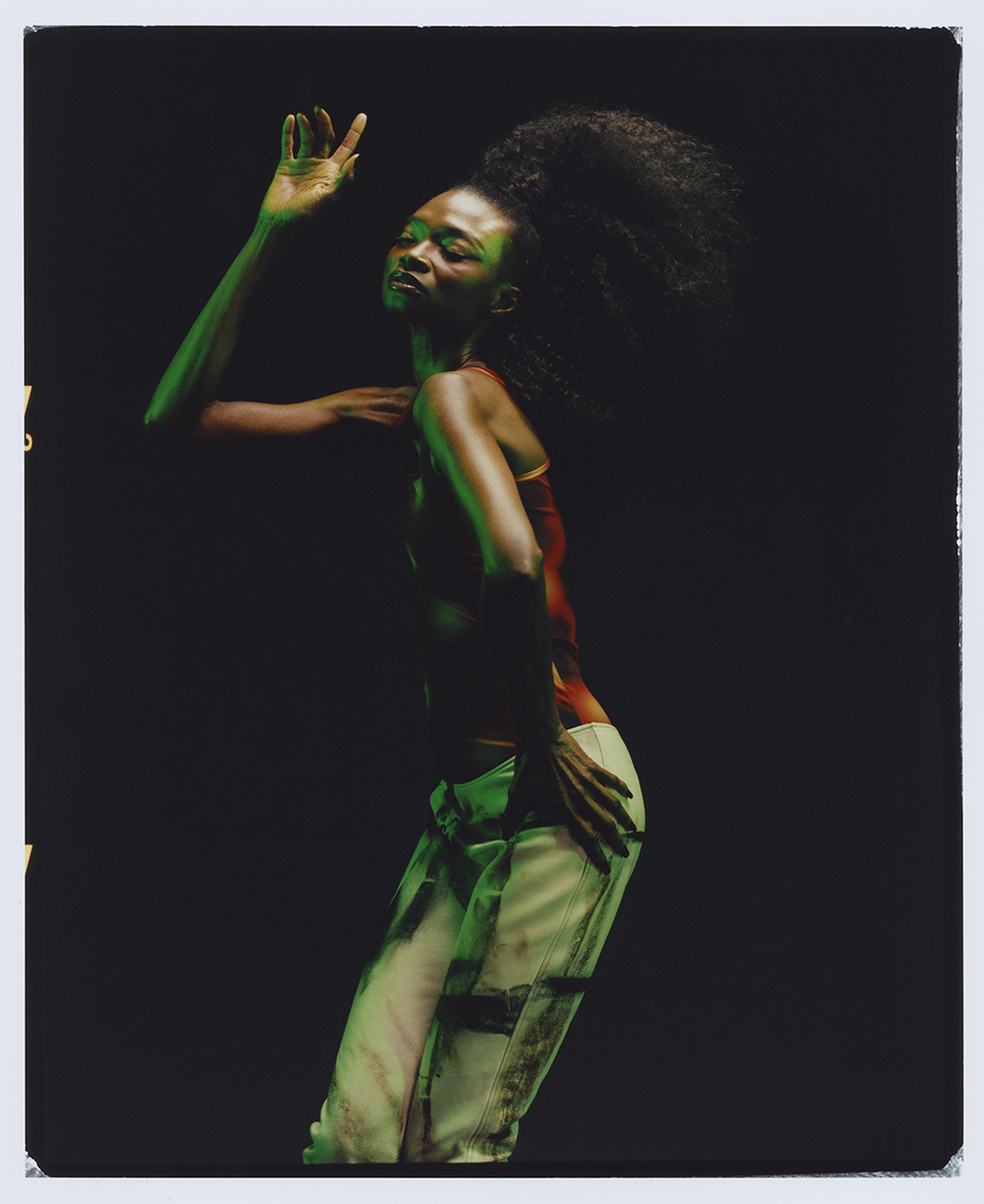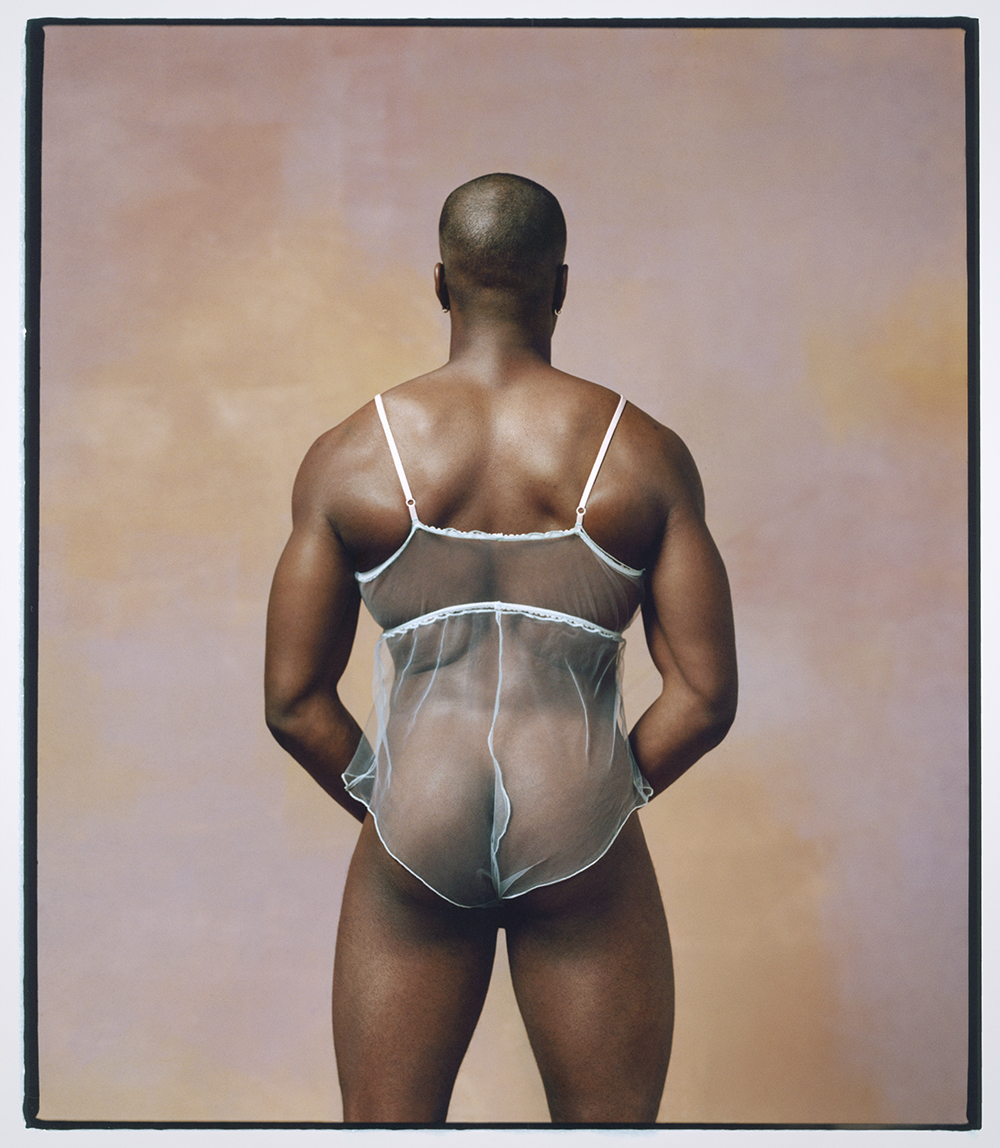With his debut monograph Feeling Seen, photographer Campbell Addy seeks to pay tribute to the heritage of Black creatives in photography and fashion, bringing in industry giants like Edward Enninful who wrote the monograph’s foreword. A manifestation of his unbridled joy in capturing black imagery, Addy captures subjects spanning the full range of modeling from Feeling Seen cover model Fadhi Mohamed to Naomi Campbell, Debra Shaw, and Adut Akech to pop culture icons Tyler the Creator, FKA Twigs, and Beyoncé. After graduating from Central Saint Martins, Addy started Niijournal and its future sibling, model agency Nii Agency, to make space within fashion’s status quo before growing into one of the prevalent photographers of the present time. Growing up in London as a Jehovah’s Witness, his conservative upbringing and queer repression as a youth-led to pushing for safe spaces for the black creative community to thrive, a sentiment that many of his peers give testimony to throughout the monograph. The British Ghanaian creative has been at the forefront of leading creatives shooting for British Vogue, Dazed, and i-D Magazine, cultivating some of his most expressive works into Feeling Seen. We spoke with the London-based photographer on his process for curating Feeling Seen, his unique perspective on casting, and how he was finally able to stop minimizing himself.
How did you first get interested in photography and set to learn more than the basics? Did you study it in formal education?
My brother was initially the more artistic and creative one out of the two of us, but we were always taught to make use of what we had around us. Creatively speaking, early on I would draw on Argos catalogs, painted, and loved make believing. When it came to higher education, I tried my hand at art and really enjoyed it. I failed my art course, though, which was very disheartening as art was the main thing I was passionate about. Being dyslexic, traditional education was challenging for me, and I found art to be a great exploration and expression. At Central Saint Martins, I decided to apply for the Fashion, Communication, and Promotion course – my interest in art was broad and not specific, so this course felt perfect. Initially, I gave styling a go within the course, but I soon found that wasn’t the path for me. So within the pathway, I tried photography and found a real passion within that medium. With all my collaborators, we made sure we had fun and made things organically. We would draw on our images, hand craft the garments, and create our own sets; it was all fun.
What significance does the title Feeling Seen hold for you, and what inspired the making of this monograph?
With all my work, I aim to champion, highlight, and empower those who aren’t always seen or heard, and with that came a huge inspiration for my monograph’s theme and title. It comes naturally in terms of wanting others to feel seen, as I never want it to feel ingenuine. As a person whose existence I’ve felt has been overlooked, I try to highlight and champion myself and others in my work wherever possible.
“Whether it’s editorial or commercial, I don’t want my work to be negatively influenced by barriers that halt individuals from being themselves.” – Campbell Addy
How long was the process of curation for Feeling Seen and what inspires you creatively?
It has been about a year/year and a half. Working with Prestel Publishing and the designers Loose Joints hugely helped see my monograph come to fruition. Previously creating Niijournal myself, three issues to show, I had a good sense of layouts, purpose, and what I wanted to put across already which was immensely helpful. I think we came together with all our strong suits and aided in making this monograph more than I could ever imagine. Lately, I’m inspired by everything beyond photography. This plays into my research too – I think one should always research beyond their craft/medium, otherwise, it’s one circle of regurgitated ideas. Inspiration-wise, this could include anything from an Anime or Manga I’m consuming, to a PS5 game I might be currently playing. Furthermore, I’m currently reading Decolonising the Camera: Photography in a Racial Time by Mark Sealy, which has helped me dissect and explore areas of my work and life that I might not have tapped into before.
As a queer black man growing up in London, how did growing up in a conservative Jehovah’s Witness community affect your creativity as a teenager?
I wouldn’t say it affected my creativity but rather the areas in my life that contributed to my creativity and had to be minimized – that in turn affected my creativity. For example, minimizing my sexuality, minimizing cultural phenomenons I was interested in but wouldn’t fly well within the community, etc. By minimizing myself when I was a Jehovah’s Witness, I was unable to express a certain authenticity. Today, that authenticity is one of the key things in my work. Whether it’s editorial or commercial, I don’t want my work to be negatively influenced by barriers that halt individuals from being themselves. Alongside shrinking myself, I can also attest that as I get older the biblical stories told to me as a child and their doctrines have inspired ideas for projects. I often try to ‘re-write’ what was told to me through my work.
You’ve relentlessly defied status quo beauty standards in your work by often working with Black models, entertainers, and even started your own modeling and casting agency. Nii Agency. What do you look out for when casting and what have been some of your most memorable subjects to shoot??
With Nii Agency it was always about finding and casting unique individuals. Never was there a box for them to fill, it was all about what they could uniquely bring to the table. Street casting was different to what it is today, and so in turn Nii Agency and Niijournal evolved into these communities and mediums that could be so highly regarded in the feelings of unity, relatability, and empowerment. When I have my hand in casting, I make sure we’re casting people who we are excited about, who might have a story to tell, or aren’t usually seen in these campaigns or mainstream editorials. I always want to create a special rapport with the talent I shoot. It’s often nerve-wracking being photographed so I want to make sure the person on the other side feels comfortable, confident, and able to express themselves or the character they’re exuding. A shoot is really a team effort, with this being said, my fondest memories on set have always been with individuals who have been like family or became family over the course of several shoot days. Coming together (talent, stylist, HMUA, art director, etc.) and creatively having all our toes in the creative pool has always been my fondest memories. We could be shooting the simplest of shoots, but if the vibe is right – it’s a forever memory.
How has working with creative collaborators like Edward Enninful, Gabriella Karefa-Johnson, and Ib Kamara aided in your creative process?
All three of them are uniquely amazing. Whether it’s our collaborations or deep conversations, a sincere and authentic sense of camaraderie and companionship is felt. This is so key, especially in an industry that can be so isolating. They all inspire me deeply with their genius and love for storytelling which in turn allows me to keep pushing my ideas further. Importantly, I think all of us see the importance of aiding in the path after us too, and not gatekeeping roles or journeys.
Your imagery often has themes of saturated colors, cast shadows, and expressive poses. How are you trying to showcase your own personal and cultural identity through these themes?
The older I get, the more I come to terms with the life that has been given to me. I use the tool of creativity to explore this life and the previous lives I believe I may have inhabited and the best way I see in doing so is through storytelling. It’s imperative for me to create work that’s nuanced and authentic. Touching on only what I know, which is my life and culture, and bringing it to life via my own eye is how I pay respect to my family, loved ones, and the craft of image-making. Not too long ago people like me were deliberately left out of visual history, or our presence was skewed. So now if I have some spaces to take up I am going to deliberately tell my story so it becomes part of history.
What do you want your audience to take away from this collective body of work?
However you feel seen, it’s key you hold onto that and propel it forward. Remember that we have every right to feel, to be seen & to be heard. This monograph isn’t the end all be all and certainly is not definitive, but rather a stepping stone in my journey and for those exploring theirs. I want viewers to understand that – their art, journeys, and how they see the world, are important.
What’s next for Campbell Addy?
I’m looking forward to my monograph’s launch event in Paris on June 24 – if you can come please do every one! I hope to be launching in New York, working in new mediums and just continuing to shape my visual work. I’ve been reading and painting a lot lately, testing out what feels right artistically, and also understanding & unearthing old and new ways to see the world and my work.





